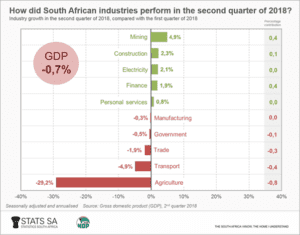While the StatsSA GDP Q2 2018 figures shows a 2.3% growth in the construction sector industry, industry experts are skeptical noting that the results are not an accurate reflection of the state of South Africa’s construction sector.
President of the Master Builders’ Association North, Musa Shangase says that although the construction sector showed a 2.3% increase in the statistics released by Stats SA, the results were based based on infrastructure projects that do not have any influence on the building industry. “Earlier this year, we noted that the entire sector faced a ‘state of emergency’, with even major construction firms living ‘hand to mouth’, and the situation has not improved. Confidence in the building industry is at its lowest level since the third quarter in 2000,” Shangase explains. “The initial euphoria in January has rapidly given way to massive negativity. A number of large construction companies are in business rescue or have declared insolvency. As the construction sector is an important indicator of overall economic performance, this should be cause for concern across the country,” he continues.Ongoing challenges
According to Shangase several key challenges are impacting the sector’s performance. These include lack of payment, illegal protest action, skills shortages and the struggling economy as a whole. “Since 2013 the industry has been in the headlines for all wrong reasons. Most notable has been the finalisation of the Competition Commission enquiries,” he says. “Private investment in building has declined 16.7% for the first 6 months of 2018 versus the first 6 months of 2017. Government is not paying suppliers on time and has also slowed the number of projects that are being awarded.”Lack of payment
“Master Builders SA has issued a number of statements around the state of the industry and is actively interacting with treasury in an effort to get members paid. The lack of payment by government is negatively impacting a large number of smaller players in the industry and also sub-contractors who traditionally rely on the larger companies for work.“A lack of new work is further impacting on the support professions such as architects, civil engineers and quantity surveyors. This is heightening competition within the building industry and suppliers to the industry,” Shangase says.








